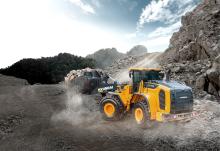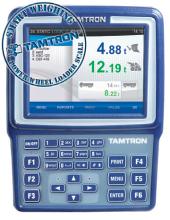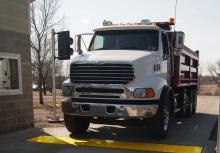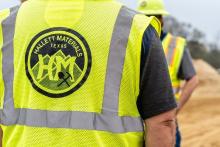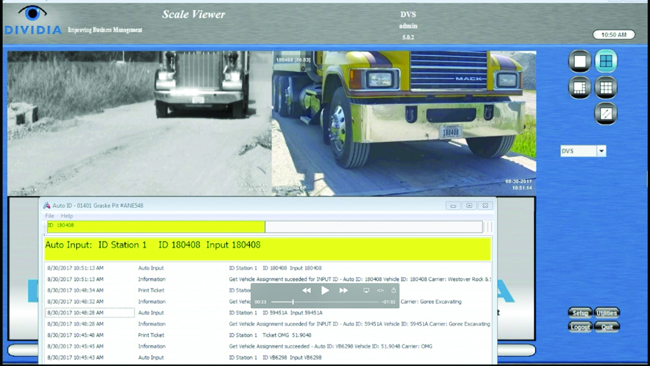
Weighing technology solutions can supply big efficiency gains for shrewd quarry operators. Guy Woodford reports.
Assets and equipment are the backbones of any quarry business. The ability to account for them is crucial to productivity, efficiency, and cost control. Efficiency is a critical competitive advantage for a small profit industry like aggregates processing, and accounting for assets saves time and makes many processes more streamlined and faster. It also helps to reduce instances of stolen materials and other problems that lead to higher costs. Another key value point is customer service. Customers are able to understand the location of the materials that they have purchased and the approximate time of when those materials will be on the road.
Quarry sites house many extremely valuable and expensive assets. Criminals see these materials as prime targets to take and resell. Not only does theft cost you money and take a huge chunk out of your bottom line, but it also halts production for significant periods of time. With Scale Watcher, an optional Gate/Valve anti-theft module alerts authorised personnel of potential theft of materials. The anti-theft module sends an email alert to one or more designated addresses whenever the gate/valve is opened and closed on a loading system and a ticket is not printed. The gate/valve anti-theft module is not reliant upon the scale or software to function and will work after hours when the plant is shut down.
The Scale Sensing feature will send an alert if a truck has left the scale, but no ticket was generated; the tare weight is above the set threshold; the gross weight from the scale does not match that printed on the ticket; the weight on the scale exceeds the truck GVW (gross vehicle weight); or the ticketing system loses connection with the scale indicator.
Scale Watcher in action
Each vehicle is issued a hand-held RFID (radio frequency identification) badge. The Apex system stores all of the information required to load each vehicle, including configuration (single or double trailer), target weights for each trailer, maximum GVW, billing information, etc.
When a truck pulls into a loadout lane, the driver presents the badge to the RFID terminal mounted at cab height. The driver will confirm his assignment on the terminal or contact the loadout operator if his assignment information needs to change. Once confirmed, Apex will capture the tare weight and communicate the lane ID and target weights for this vehicle to the loadout PLC (programmable logic control).
The operator will lower the spouts and initiate the loading. The scale configuration allows the PLC to load a front and back trailer simultaneously with independent target weights. Once the loading is complete and the spouts have been raised, the PLC will set the appropriate status and Apex application will capture the final gross weight and print a delivery ticket at the appropriate remote printer.
At the time the ticket is printed, the Scale Watcher module will store the video capture from two cameras, with an overlay of key ticket data values, as a PDF image that is indexed by ticket number for easy retrieval in the Apex application. An additional image of the printed ticket is stored in the ECM (enterprise content management) system.
The ability to deliver proof of pick-up to customers gives them peace of mind to know that the amount of materials they have ordered has made it through the first step of the delivery process. Site-automation technologies, such as Scale Watcher, deliver impressive improvements in the speed and efficiency of operations and help to control costs.
Like any industry, the aggregates world has its own set of specific requirements. Avery Weigh-Tronix’s Mark Wilcox tells Aggregates Business there are 10 key considerations you should bear in mind when choosing a weighbridge supplier.
Expert advice
Think about the way you plan to use your weighbridge both now and in the future. The right supplier should be able to help you maximise your investment by specifying a solution that completely fits your business and its growth plans. This may include optimising or modifying your existing weighbridge operations before even having to make a purchase.
Build quality
How many years do you expect to use your weighbridge for? Most quarries are looking for 20 years of use to maximise their investment. However, if this is your expectation the weighbridge must be built to cope with a constant flow of heavy goods vehicles carrying up to 40 tonnes at a time. With potentially millions of tonnes passing over a weighbridge during its lifetime, a concrete deck plate can easily cope with heavy loads and build features such as fully welded bottom plates increase weighbridge durability.
Customisation
Customisation options are important elements of the decision-making process and are vital to ensuring your weighbridge fits your business needs. Weighbridge size, capacity, load cells and even paint finish can all be customised to suit your operations.
Dust residue is a common problem for weighbridges situated in quarries. Customisation options like T-rubbers close the gaps around the weighbridge deck to stop dust ingress and prevent dust build-up from giving inaccurate weight readings.
Service and support
In the event of your weighbridge not working, how much time can you afford to lose? Look for a supplier who can offer service plans which maximise uptime and guarantee your weighbridge is in full working order and legal for trade again as soon as possible.
Your weighbridge supplier should offer preventative service and maintenance from qualified engineers to minimise your risk of downtime. When introducing external workers onto site, it’s imperative they know the dangers of working with aggregates and have experience and training of how to work safely in this environment.
Design
Common problems from badly designed weighbridges include load-cell failure, or inaccurate weight readings due to lack of drainage or a build-up of spoils around the load cells. Although it’s always advisable to regularly clean your weighbridge and have regular maintenance, the right design for your usage and environment can go a long way to minimising the risks of downtime.
Design features such as load-cell inspection covers keep load cells safe from harm including dust ingress. While restraining systems prevent excessive rocking when heavy wagons drive onto the weighbridge.
Manufacturing process
Reputable weighbridge manufacturers should be able to demonstrate the quality of the key components and materials used in their weighbridges. Weighbridges should be manufactured in line with recognised ISO standards, covering the full traceability and quality of the steel, as well as the competence of in-house automated welding. Another consideration is the manufacturing country as this could impact on stock availability, lead times and shipping costs, especially post-Brexit.
Customer testimonials
Nothing says ‘you’re doing a good job’ more than a customer willing to say how much they value your product. Look for a weighbridge provider who has customer case studies and reviews on their website from other aggregates producers or can point you in the direction of some previous happy customers who are willing to share their experiences.
Total cost of ownership
A weighbridge is a big investment and cost can often be a deciding factor when choosing a supplier. However, a lower initial price can often lead to a higher overall cost when looking at the lifetime of the weighbridge. Instead, choose a supplier who can help you unlock the value in your weighbridge, through future-proofed plans and configurable options.
The complete solution
Weighbridges can come with a long list of peripheral equipment, including unmanned terminals, traffic management systems and automatic number plate recognition (ANPR). Ensuring all these different components work seamlessly together can be difficult, so choosing a supplier who can provide the full weighing solution makes the process simpler and means one point of contact if anything goes wrong.
A brand with longevity
Investing in the right supplier can see your weighbridge last years and grow with the changing needs of your business. Look for a recognised name in weighbridge production who has a proven history and strong track record when it comes to delivering quality products and service. It is important that whoever you choose will be around to support your business over the lifetime of your weighbridge.

